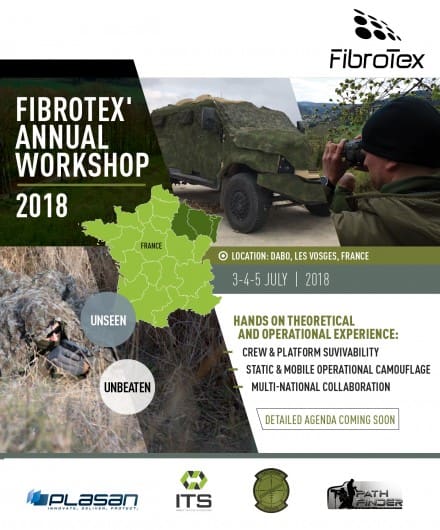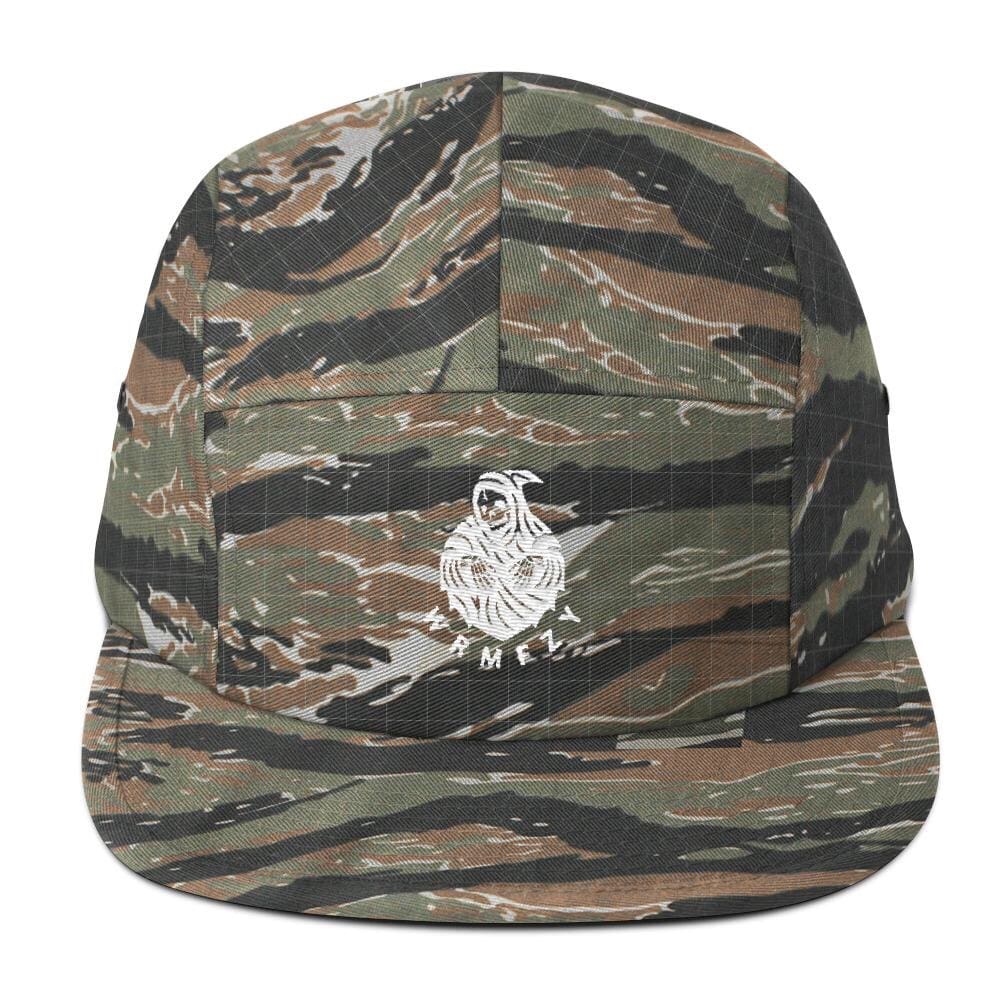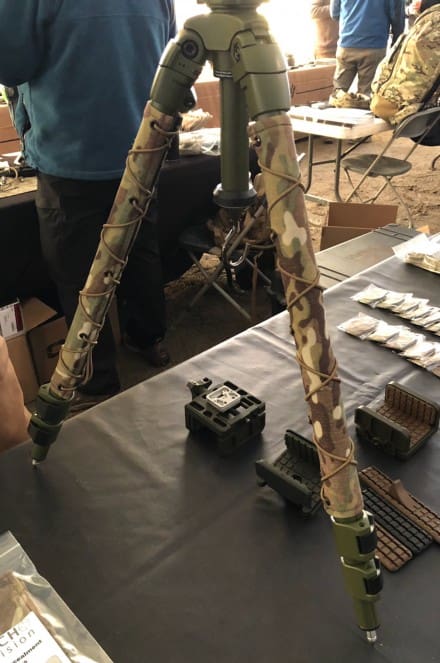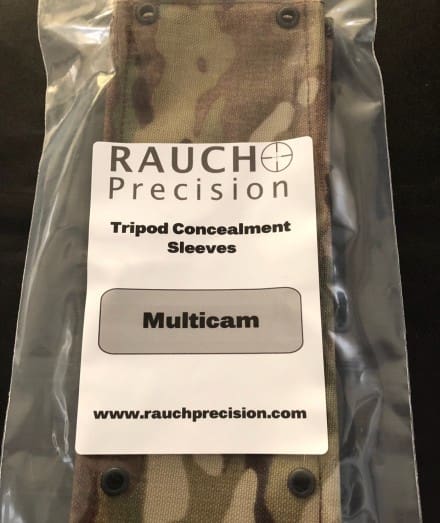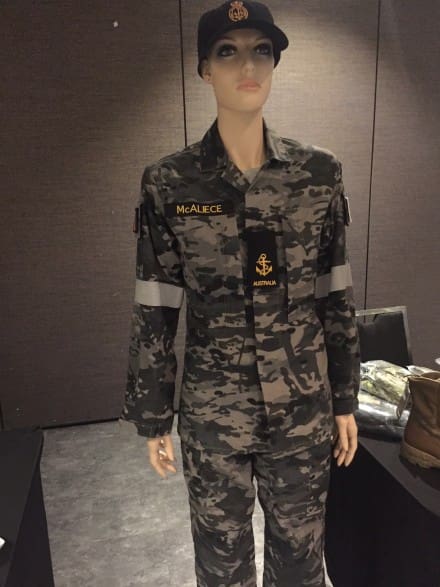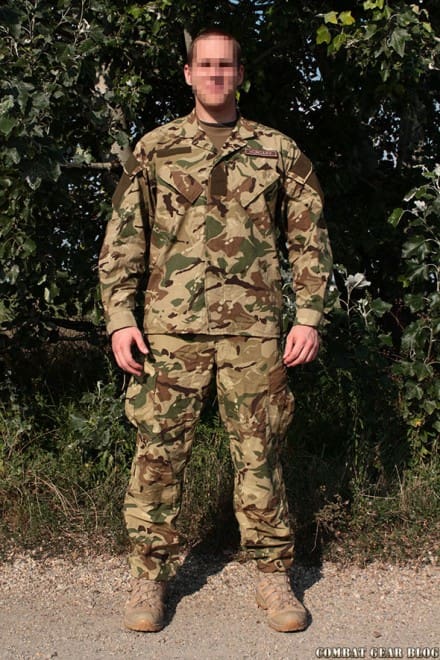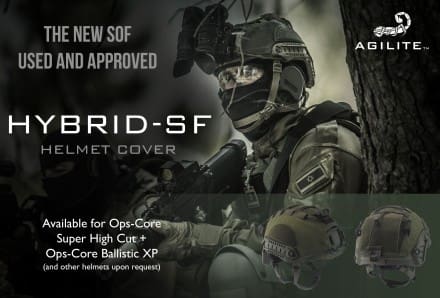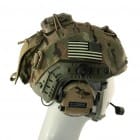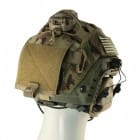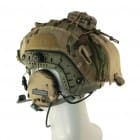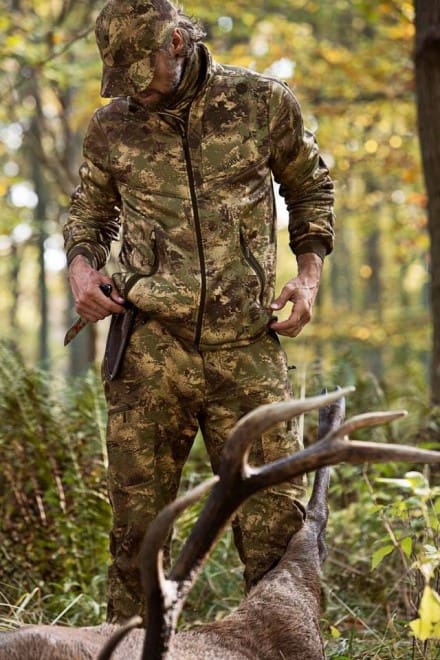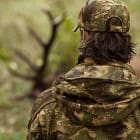As you know, Airmen have been wearing Operational Camouflage Pattern and MultiCam for years. Unfortunately, it’s been based on either duty position or command of assignment. Everyone else has been saddled with that travesty of a camouflage pattern, Digital Tigerstripe, since 2006. Lately, I’ve been hearing lots of chatter from industry that an announcement of an Air Force-wide transition to OCP was imminent. These slides discuss the issue.
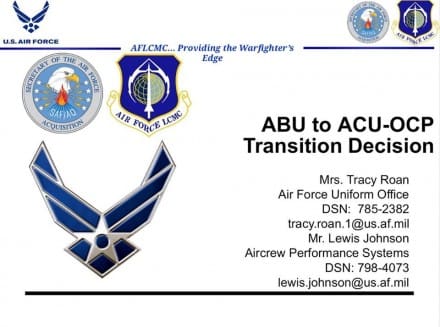
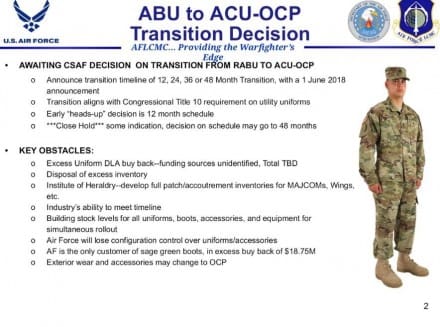
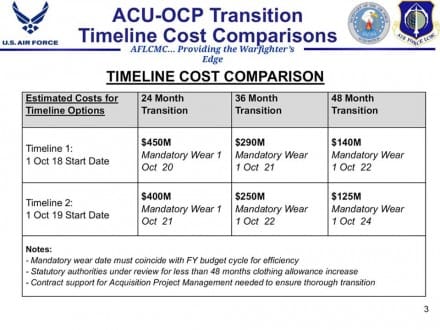
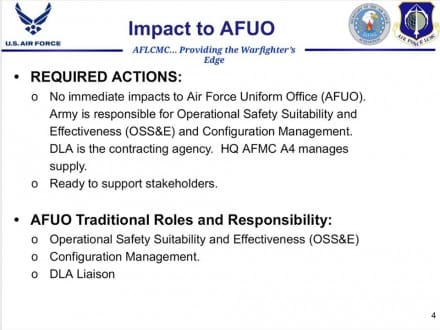
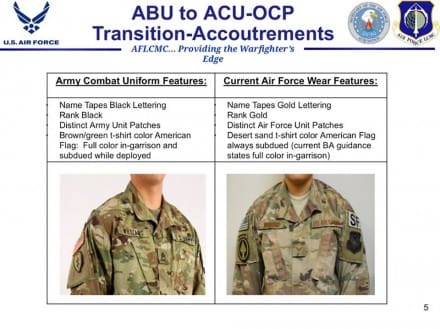
It looks like the long pole in the tent remains buying the Legacy ABU inventory from Defense Logistics Agency. They still don’t know how much it will cost or how they’ll pay for it. This same issue held up transition from Woodland/Desert to Digital Tigerstripe.
An interesting aside is that Airmen call ACUs.”, “OCPs” because they don’t understand the pattern is OCP while the uniform is the Army Combat Uniform. I guess they’ll have to refer to it as the Airman Combat Uniform.
Briefing courtesy of www.facebook.com/AirForceForum.


